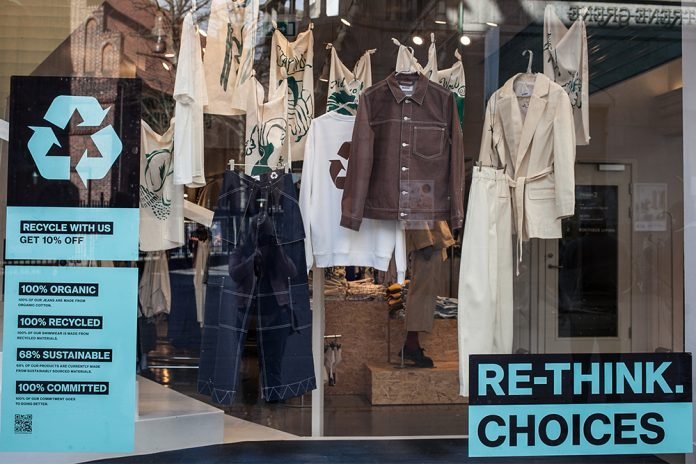The efforts to save the environment by producing recycled garments from used stuff have gained momentum, luring designers to present consumers with attractive clothes.
Upcycling is a labor-intensive process that requires reworking streetwear to divert good denim from landfill, but the results are worth the effort. Making something new out of old clothing is a technically complex process. Sourcing, cutting, and re-sewing textile waste requires more time, creativity, and skill than constructing a garment from a bolt of new fabric.
Moreover, the process is more expensive, but upcycling has significant environmental benefits. All garments are upcycled equally. One of the most essential pillars of circularity is keeping materials in circulation at their highest value – in other words, not ruining a perfectly functional garment by being too scissor-happy.
When upcycling clothing at scale, it is also essential the materials being used are waste that would otherwise be destined for landfill. Despite these challenges, many designers are tackling fashion’s excessive waste problem head-on and creating genuinely beautiful garments from unwanted clothes.
Young designer Conner Ives made his first dress from upcycled T-shirts when he was 20. The garment is one of the signature pieces in every collection he releases under his eponymous London-based label. T-shirts aren’t the only waste textiles he reuses. “Scarves, piano shawls, vintage sequins, denim, and military blankets are categories we will revisit with a new shape season after season,” he says. Most of the Ives range is made from secondhand or deadstock pieces he sources through vintage wholesalers in the UK who import from the US.
ELV Denim was founded on the principles of upcycling. In 2018, the brand’s creative director, Anna Foster, turned unwanted used jeans into one desirable pair by cutting them up and sewing them back together. Earlier this year, she partnered with The Outnet, an online multi-brand retailer, to create an upcycled collection from unsold stock. Over 50 styles were made by deconstructing and reconstructing dresses, shirts, and jeans from different brands.
Since 2019, Melbourne label Homie has been turning its own stock, faulty stock, and other brands’ deadstock into its Reborn collection. One of its most prominent collaborators is the streetwear brand Champion, which donates unsold hoodies, T-shirts, and track pants.
Brands creative director and co-founder Marcus Crook gives “a bit of love” to the garments. They can be sold for more than the original retail price, so it’s a solution to heavy discounting and ruining profit margins.
KitX founder Kit Willow set up the Future From Waste Lab with the property developer Beulah in 2022. From the project studio in Melbourne’s South Bank, Willow has created a range of blazers, coats, skirts, corsets, and dresses from secondhand denim. “There is an enormous supply and surplus of textiles in the waste streams, combined with fashion’s other environmental impacts,” says Willow.
When designer Maggie Hewitt realized about 2% of the stock was deemed unsellable due to slight imperfections such as dropped stitches, marks, or holes, she came up with Restore. Now, every imperfection is covered by a small embroidered red love heart and released at a discount through her online store. The range is sold out, but stock is added throughout the year. Sydney label Romance Was Born has produced an upcycled range called RWB Forever for a few years. Each item is crafted from a collection of vintage garments, accessories, scarves, souvenir tablecloths, doilies, crochet remnants, and upholstery fabrics. Recently, an acquaintance donated some old crocheted blankets. “It feels nice that people can trust us with their precious heirlooms, too,” Plunkett says.



